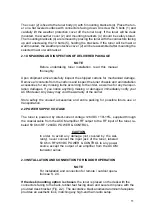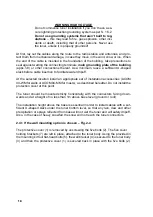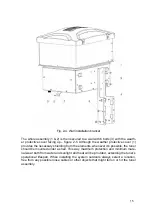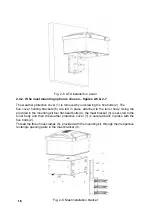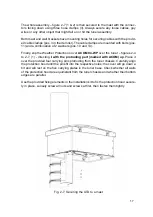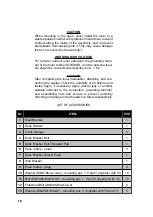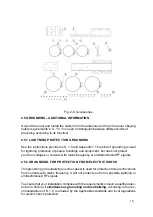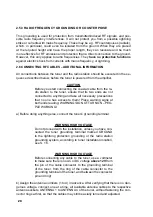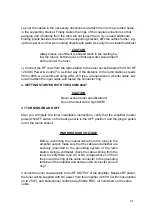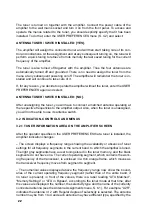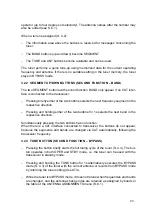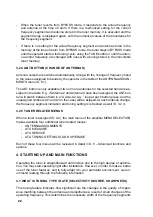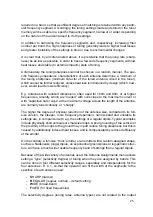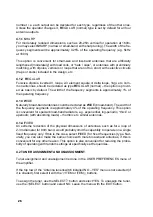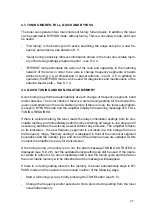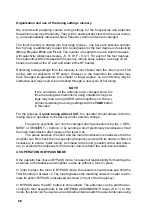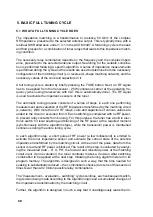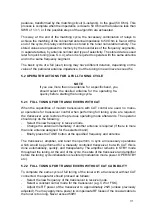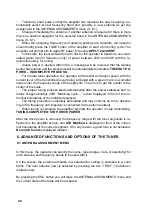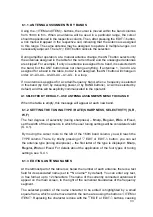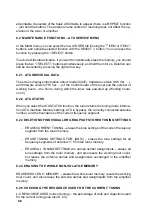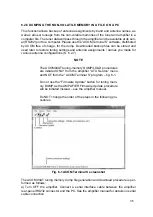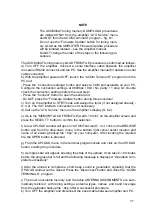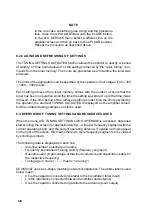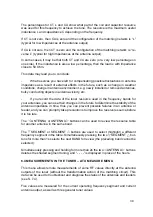
24
24
- When the tuner reverts from BYPASS mode, it responds to the actual frequency
and antenna at the time of return. If there is a memorized setting for the current
frequency segment and antenna stored in the tuner memory, it is executed and the
segment range is displayed again, with the numerical values of the boundaries for
the frequency segment.
- If there is no setting for the actual frequency segment and antenna stored in the
memory at the time of return from BYPASS mode, the tuner stays in BYPASS mode
until the operator starts a full tuning cycle, using the TUNE button or until the anten
-
na and/or frequency are changed with ones with a tuning stored in the nonvolatile
tuner memory.
3.2.4 АNT BUTTON (CHANGE OF ANTENNAS)
Antenna outputs are switched automatically, along with the change of frequency band
to the values assigned to bands by the operator in the table of the ANTENNA ASSIGN
-
MENTS menu (S. 6.1).
The ANT button is only available if two or more antennas for the selected band are as
-
signed in the table. E.g., if Antenna 2 and Antenna 4 have been assigned, the ANT but
-
ton will switch between them in a “A2-A4-A2-A4...” loop at each button press, and the
unassigned numbers (A1 and A3 in the case) will be skipped. At each antenna change,
the frequency segment indication and tuning setting is refreshed as well (S. 3.2.1).
3.2.5 TUNER RELATED MENUS
When a tuner is assigned (S. 4.2), the main menu of the amplifier MENU SELECTION
makes available four additional tuner related menus:
- ANTENNA ASSIGNMENTS
- ATU MEASURE
- ATU SERVICE
- ATU TUNING SETTINGS LOOK UP/ERASE
Each of these four menus will be reviewed in detail in S. 6 – Advanced functions and
options.
4. STARTING UP AND MAIN FUNCTIONS
Operating the tuner is straightforward and intuitive due to the high degree of automa-
tion. You may start operating right after installation. However, in order to make a better
use of the tuner features, and to fully adapt it to your particular environment, we rec-
ommend reading through the following information.
4.1 WHAT IS TUNING TYPE / RATE (SELECTIVITY DEGREE, SHARPNESS)
This tuning feature indicates how significant are the changes in the quality of imped
-
ance matching between the antenna and amplifier as a result of small changes of the
operating frequency. This determines the necessary width of the frequency segments
Summary of Contents for ACOM 04AT
Page 1: ...1 ...
Page 57: ...2 2 ...


